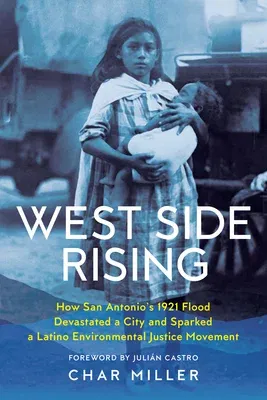On September 9, 1921, a tropical depression stalled just north of San
Antonio and within hours overwhelmed its winding network of creeks and
rivers. Floodwaters ripped through the city's Latino West Side
neighborhoods, killing more than eighty people. Meanwhile a wall of
water crashed into the central business district on the city's North
Side, wreaking considerable damage.
The city's response to this disaster shaped its environmental policies
for the next fifty years, carving new channels of power. Decisions about
which communities would be rehabilitated and how thoroughly were made in
the political arena, where the Anglo elite largely ignored the
interlocking problems on the impoverished West Side that flowed from
poor drainage, bad housing, and inadequate sanitation.
Instead the elite pushed for the $1.6 million construction of the Olmos
Dam, whose creation depended on a skewed distribution of public benefits
in one of America's poorest big cities. The discriminatory consequences,
channeled along ethnic and class lines, continually resurfaced until the
mid-1970s, when Communities Organized for Public Services, a West Side
grassroots organization, launched a successful protest that brought
much-needed flood control to often inundated neighborhoods. This
upheaval, along with COPS's emergence as a power broker, disrupted Anglo
domination of the political landscape to more accurately reflect the
city's diverse population.
West Side Rising is the first book focused squarely on San
Antonio's enduring relationship to floods, which have had severe
consequences for its communities of color in particular. Examining
environmental, social, and political histories, Char Miller demonstrates
that disasters can expose systems of racism, injustice, and erasure and,
over time, can impel activists to dismantle these inequities. He draws
clear lines between the environmental injustices embedded in San
Antonio's long history and the emergence of grassroots organizations
that combated the devastating impact floods could have on the West
Side.

